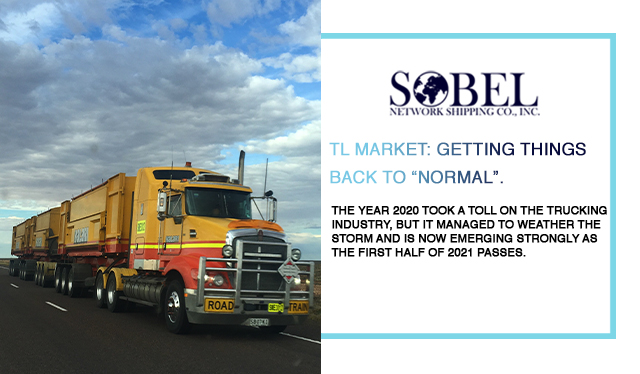The year 2020 took a toll on the trucking industry, but it managed to weather the storm and is now emerging strongly as the first half of 2021 passes.
With the promise of curbing the COVID19 virus through vaccination and the use of stimulus funding to push consumer spending, the truckload market is experiencing increased demand with higher rates, giving carriers an edge. However, the need to meet the almost endless demand for drivers continues to loom large.
Restoring the Trucking Industry
Yes, things are better than a year ago, but there is still a long journey to restore natural equilibrium in the industry.
Market conditions are at or very near to peak for most truckload carriers, but the future remains uncertain. The pandemic created a never-before-experienced situation that stretched demand and capacity to the limits. Currently, there are many plausible future outcomes, and uncertainty continues.
Imbalance in Supply and Demand
Stimulus funds from Washington have pushed a buying spree of durable goods, but if inflation continues, then a possible crash could occur in 2022 or 2023. The growth in freight demand has peaked, but there continues to be a constraint on driver capacity. The lack of drivers has caused an imbalance in demand and supply which might persist into 2022.
The Labor Shortage
The labor shortage has made transit time a problem. On-time pickups and on-time deliveries remain a challenge due to the lack of drivers, experienced drives, and highway congestion. Reliable and fast freight movement might end up costing more.
Spot Pricing
Spot pricing is above contract pricing. Many shippers are trying to move from the spot market freight over to the contract side of the market. However, there is also a rise in prices on the contract side. Even though the price hikes have been earmarked for drivers, driver availability has not improved.
Driver Availability
There is concern that an infrastructure bill will further strain truck driver availability as some drivers prefer to stay close to home driving cement mixers, backhoes, or front-end loaders. The tight labor market will cause rate increases to pad driver pay and attract labor.
Shippers will continue to face rising transportation costs. The reality is that the rising costs will probably be passed on to consumers.
With driver availability a continuing problem, competition is a problem. Many offer more time home and stimulus payments as incentives. Sharp pay increases have also increased.
Without the $2 trillion infusions from the CARES Act and the $3 million released in the first quarter, the trucking industry would not have achieved such an impressive economic rebound. Carriers have benefited and shippers have suffered.
The Sobel Network Shipping Co., Inc. continues to offer turnkey logistic solutions with an innovative eye on the future. The goal is to continue to offer exceptional service and overcome any future hurdles.


